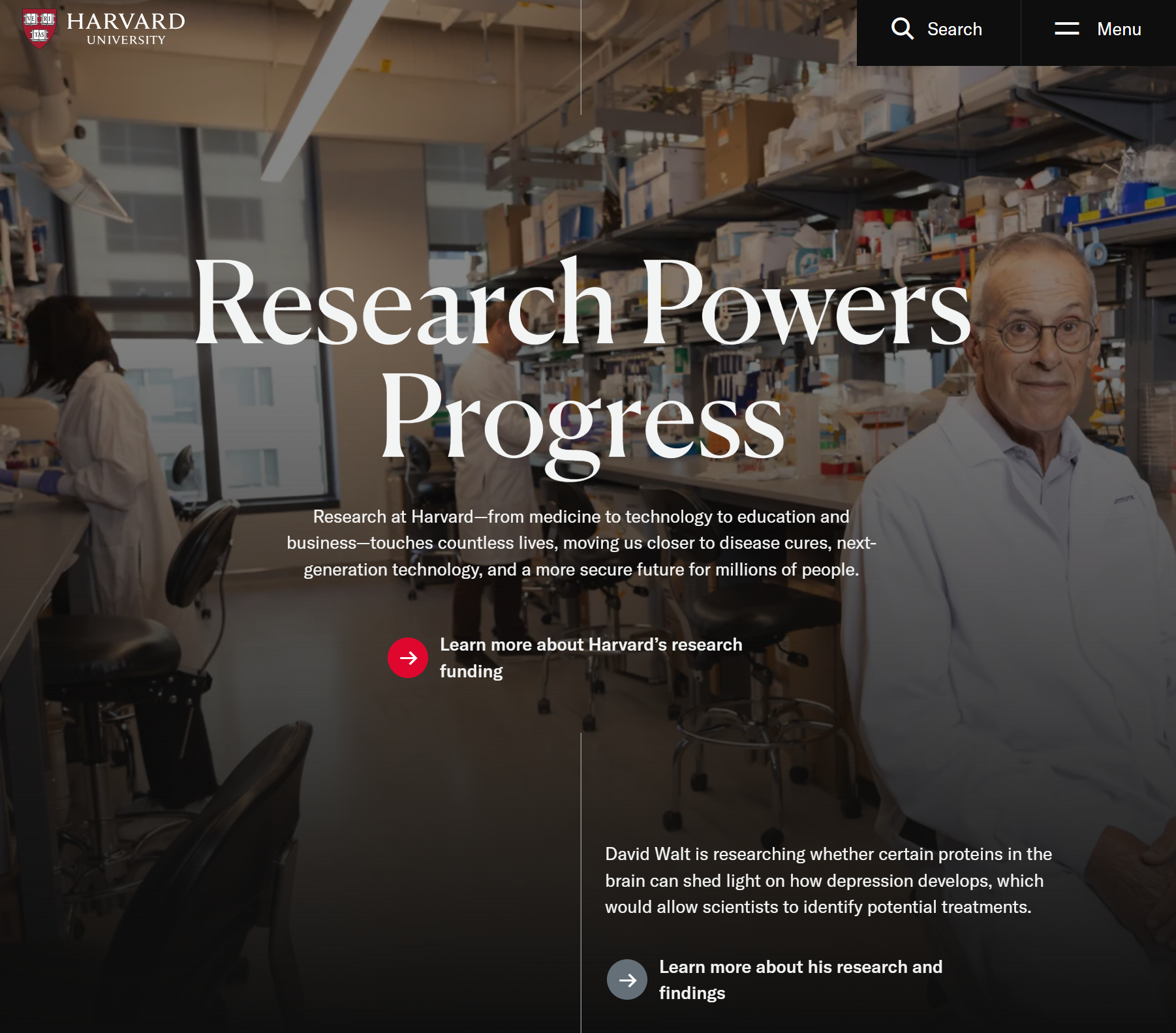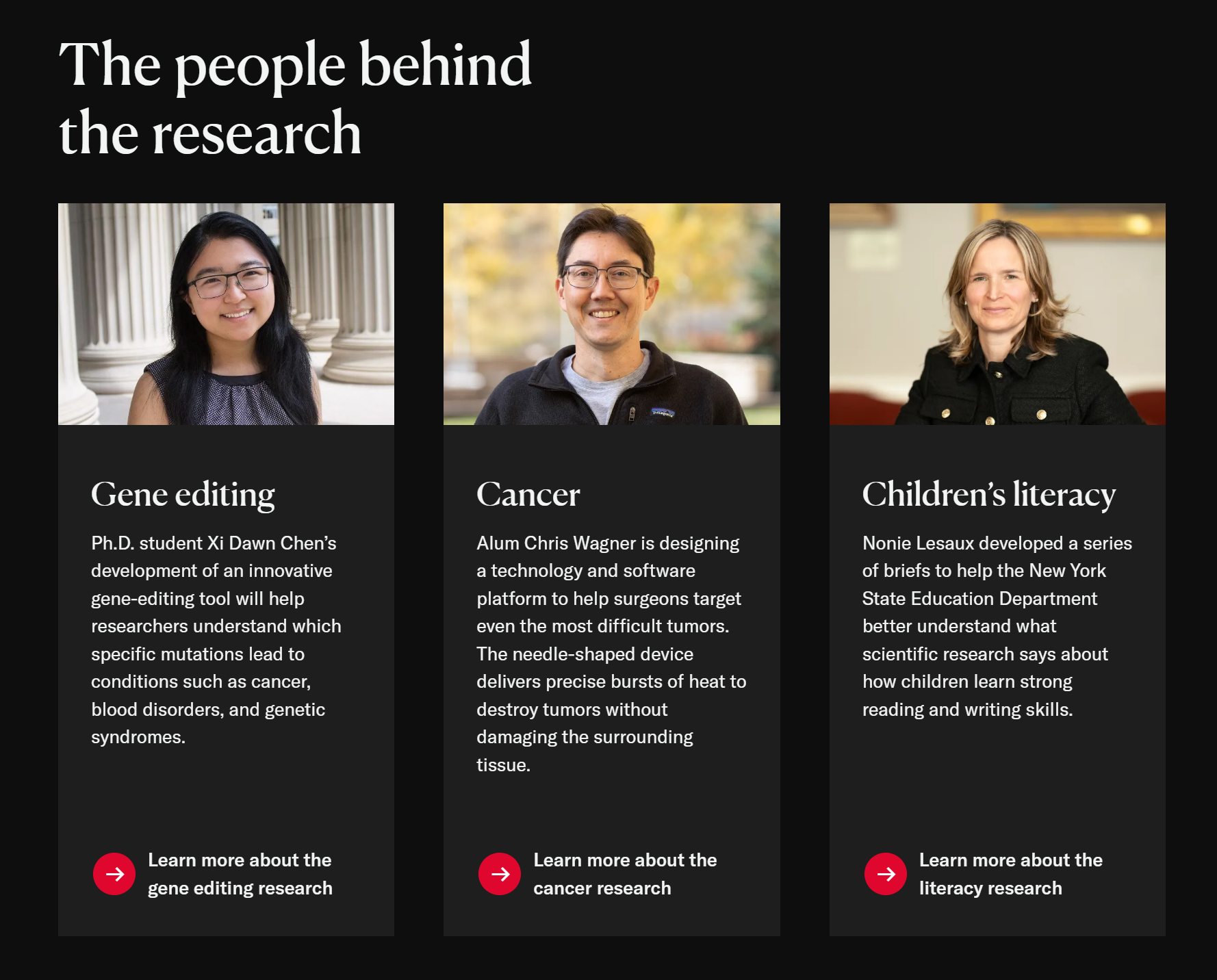Harvard’s website overhaul shows how to hammer in a narrative amid crisis
Hone your narrative and use existing content to respond fast

You’re getting exclusive access.
This article was originally created just for members of Ragan’s Communications Leadership Council. Due to strong interest in this story, we’re making the full version publicly available.
On the morning of April 9, Harvard University’s homepage was fairly standard collegiate fare.
“Where world-class faculty and talented students come together to pursue knowledge, conduct groundbreaking research, and produce transformative scholarly work to help create a better world,” the header read, according to a snapshot found on the Wayback Machine. It included fast facts about the college’s history and student body, information about school traditions and financial aid.
But by the evening of April 9, the page had transformed into a robust defense of a university that now views itself as under siege from the federal government.
We know Harvard had been in negotiations with the government over what the Trump administration deemed antisemitic activities as well as DEI programs. On April 11, the government sent a letter making a list of demands, including on hiring, admissions and curriculum, which Harvard rejected. The federal government then froze $2.2 billion in research grants and has threatened to revoke the university’s tax exempt status. Harvard has since filed a lawsuit against the administration to unfreeze the funds.
But while this case plays out in the courts and in the highest echelons of power, Harvard is staging its own communications campaign, starting with the humble website.
Everything changed
No aspect of the homepage of the website remained untouched. The background changed from white to black. It was completely reformatted, moving from a tile-based layout to a sleek, timeline-like vibe. And the words and focus changed from a focus on students and recruitment to an ardent defense of the role of research in American life.

While before, research was one point of many in the welcome message, the concept now dominates every aspect of the copy and imagery.
“Research Powers Progress: Research at Harvard—from medicine to technology to education and business—touches countless lives, moving us closer to disease cures, next-generation technology, and a more secure future for millions of people,” the welcome message reads.
The first link available to click on is to learn more about Harvard’s research funding. Scroll further and you’ll see further  stories about the research the school conducts – ranging from robotic devices for stroke survivors to gene therapies for people with sickle cell anemia to techniques for reducing chronic school absenteeism. Even further, you’ll see personal stories about the researchers who do this work.
stories about the research the school conducts – ranging from robotic devices for stroke survivors to gene therapies for people with sickle cell anemia to techniques for reducing chronic school absenteeism. Even further, you’ll see personal stories about the researchers who do this work.
The message is crystal clear: Harvard focuses on research. Research makes lives better. Unspoken but obvious: America should fund Harvard’s research.
Most of these stories do not appear to be custom made for this project. Many were published earlier in 2025; at least one dates back to May 2024. But simply by rearranging and presenting the same content in a different way, they made a powerful point.
And this tactic was smartly timed to take advantage of a coming wave of interest in Harvard: According to Google Trends, search traffic for “Harvard” the week of April 13 leapt from its usual aggregated score in the 40-50 range to the maximum score of 100. Some number of those people surely visited the official Harvard webpage and were met with a robust defense of the school’s jeopardized research work.
What you can learn
Harvard executed on several principles any organization can take when a major news story puts them in the spotlight:
- Choose one narrative. Harvard could have chosen to fracture its message by also discussing its student body, student aid and fundraising efforts. But instead, it homed in on the area it deemed most threatened and made that the entire story. As a result, web visitors walk away with the understanding of how important research is to Harvard – and to others.
- Move fast. A confrontation with the federal government was no surprise for Harvard, having watched Columbia University go through similar issues. They deployed the site even before they received the demand letter, perhaps expecting a breakdown in communications. By taking advantage of the highest spike in interest, they were able to get their message to the broadest audience.
- Use what you have. By repurposing brand journalism content already on their site, Harvard was able to move with the requisite speed without overburdening their comms team. They’d already told their story for years – it was simply a matter of moving it into a different format.
Want more content like this?
Join Ragan’s Communications Leadership Council to unlock exclusive research, peer insights, and expert guidance tailored to help you lead with impact. Explore membership here.
Allison Carter is editorial director of PR Daily and Ragan.com. Follow her on LinkedIn.







